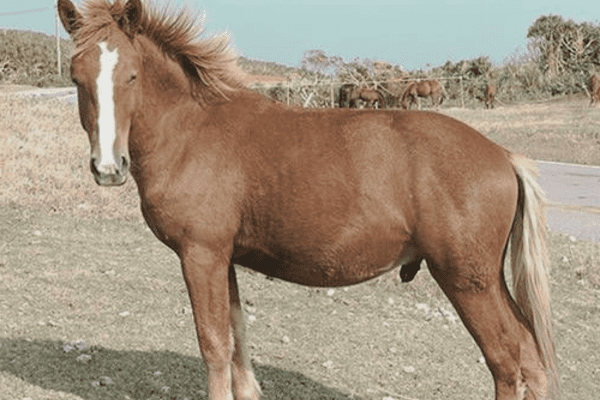The Yili Horse, a small yet resilient breed, emerged in the early 20th century amidst the rugged landscapes of Xinjiang, in northwestern China. This breed is a remarkable result of a cross-cultural equine fusion, blending the robust Russian horse lines with the enduring native Mongolian breeds.
More than just a means of transport or a beast of burden, the Yili Horse is deeply embedded in the local culture, valued not only for its strength and agility but also for its nutritional contributions in the form of milk and meat.
History:
The Yili Horse, an equine breed of great historical and cultural significance, emerged in China’s Yili-Kazakh Autonomous District mountain basin grasslands. Its development, tied into both local history and geography, offers a fascinating look into early 20th-century horse breed evolution.
Origin and Development
Crossbreeding Initiatives: The Yili Horse can be traced back to Russian immigrants who introduced various stallions from outside Kazakh herds to improve local breeds; this mixture of foreign and indigenous genetics formed the basis of Yili breeding programs.
Government Intervention in 1936: Recognizing the promise of these initial crossbreeding efforts, local authorities introduced breeds such as Orlov Trotters, Don and Anglo-Don to refine and strengthen Yili stock.
Problems and Breakthroughs in Ecommerce Development
Initial Missteps: Despite best efforts, initial crossbreeding programs did not yield the desired results, particularly with regard to second generation animals which struggled to meet quality requirements.
Turnaround in 1963: In 1963, an important breakthrough occurred with the development of an appropriate draft riding type for use on local terrain and climate, leading to formal recognition and establishment of Yili breed.
Characteristics and Uses
Endurance and Speed: Yili breed dogs were prized assets throughout Southeast Asia due to their exceptional endurance and travel speed, earning them great respect from animal farmers in this region.
Versatility: Yili horses were not only used for riding and driving purposes; they were also bred for milk production and meat harvesting – further emphasizing their versatility within local economies.
Modern Recognition
Today in China, the Yili Horse is recognized as a ‘developed breed,’ evidence of its successful evolution over time via selective breeding.
Physical Characteristics
Yili horses typically boast strong physiques with well-muscled bodies, broad chests, straight backs and sturdy, well-formed legs adapted for traversing rugged terrain in valley environments. Available colors for this breed are bay, black, chestnut and grey with height ranging between 14 and 15 hands (56 to 60 inches).
Temperament and Uses
Renowned for their calm and submissive temperament, Yili horses are easy to train, making them suitable for many purposes. Most commonly they are employed as riding horses, agricultural work animals and pack animals – however their endurance and agility make them excellent candidates for long distance riding as well as equestrian sports competitions.


Cultural Impact
The Yili horse has become an integral part of Kazakh cultural heritage. Celebrated at festivals, competitions, and folklore performances alike, its symbolic value speaks for itself as it serves to reinforce both symbiotic relationships between humans and horses alike.
Conservation and Breeding Programs
Recent years have witnessed an increasing awareness of the need to preserve Yili horse breed. A variety of breeding programs have been initiated in order to preserve its genetic diversity and purity – key efforts in ensuring its continued contribution to agriculture and cultural diversity across regions worldwide.

